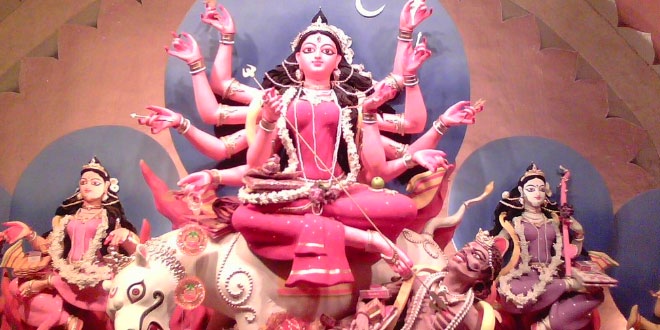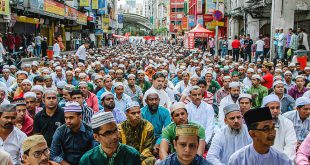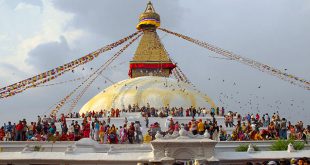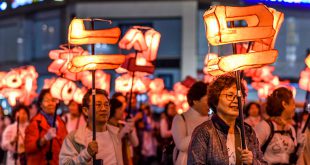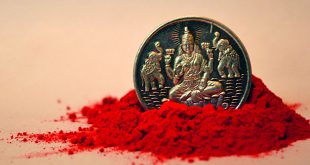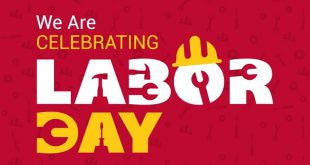It now embraces those on the margins, and has truly become “glocal” – with both local and global elements – but at the same time the umbilical cord with heritage remains intact.
Kolkata Traditional Durga puja
Most of the 4,000 plus marquees in Kolkata and its suburbs are a far cry from the simpler ‘bonedi bari‘ (traditional family celebrations), ‘barowari‘ (by communities or groups of people) and ‘sarbojanin‘ (for all) pujas that began around 300 years ago.
They now reflect global affairs, serve as a platform to engage artists from abroad and strengthen diaspora links, provide an interface for politicos to propagate ideologies – all the while maintaining connect with masses, be it offline or online.
“It is becoming inclusive with transgenders and sex workers getting to participate. Thanks to the themes and increasing links with diaspora via social media, it is global in thought but local in action,” eminent Indologist Nrisingha Prasad Bhaduri told.
The most visible aspect of the puja is undoubtedly the standout art and decor.
“It is getting better and better. Each marquee or idol is a piece of art. And look at the way our local craftsmen have been designing these opulent and international theme pujas. It is a positive thing for the artists.
“The social structure has changed and the result is pujas have become sophisticated,” he said.
This year, some of the key themes include India–Bangladesh enclave swap, Nepal earthquake and GM foods.
Such is the influence of the festival that, according to author and specialist on the art and cultural history of modern and contemporary India, Tapati Guha-Thakurta, the “urban festival” has metamorphosed into a “template” for all other festivals and has “secularised” over the decades.
Allaying concerns about dilution of culture, Bhaduri said there is nothing to worry because the deity worship continues in the same format, notwithstanding the variety in celebrations.
“In fact, now there is a healthy amalgamation of Western ideas and Indian culture,” Bhaduri said.
So when American artist Tracy Lee Stum, known for her 3D street painting installations, collaborated with artists from Bengal last year to put up a throwback of 1960s Kolkata (then Calcutta), it only strengthened the cultural connect with youngsters who were attracted to the vibrant art form.
The street art had images of Uttam Kumar, the iconic actor from the regional film industry, and the omnipresent yellow taxi of Kolkata streets – an example of the Indian cultural connect in the Western art, Bhaduri noted.
“Plus there is the competition among organizers for various categories of awards, starting from decor to social work and public amenities. The advantage is that even though it means organizers will be forced to indulge in social work (from arranging ramps for the elderly to providing toilet facilities) to compete, at least it benefits masses,” said Bhaduri.
Beneath the glamorous exterior, these very pujas have become golden opportunities for political parties to tap into potential followers and test waters.
In the 1960s, the atheist communists started setting up red book stalls at the pandals as a public interface, and their endeavor has gradually got more organised. The Congress followed suit over the years. West Bengal’s ruling Trinamool Congress now leads the stall count and recently the Bharatiya Janata Party (BJP) has taken the same route to showcase publications that reflect its ideology.
Chief Minister Mamata Banerjee has been grabbing the spotlight as she embarks on a pandal inaugural spree.
“This (the direct involvement) happened in the last couple of years. Today the face of politicians dominates. It has been hijacked by this particular party (the Trinamool),” observed Guha-Thakurta, the director and professor of history at the Centre for Studies in Social Sciences.
As art flourishes and political ideologies branch out, Durga puja is also a time to rake in some moolah. This is the time when ‘pujor gaan’ or songs for the pujas, used to be released. Now, CD launches of songs, albums and films are part of the roster.
Advertisements, electronic hoardings and product samplings at discounts and as freebies are a common sight as corporates chip in to sponsor some major puja clubs and organisations.
But some things remain unchanged.
For any Bengali family that has members scattered across the globe, re-unions at this time of the year are a must. The ‘addas’ or informal chat sessions, a hallmark of Bengal’s culture, which seem to be fading, crop up during the puja days, says Guha-Thakurta.
National Award winning actor Prosenjit Chatterjee prefers long adda sessions at his residence with friends, families and colleagues and rarely goes out.
“The decorations, lighting, pandals, devi idol all have changed so much and have become so modernized. But, if you ask me I still like the traditional pandals, traditional Durga idols and the traditional ways of offering puja to the god,” the actor told.
 Kids Portal For Parents India Kids Network
Kids Portal For Parents India Kids Network
